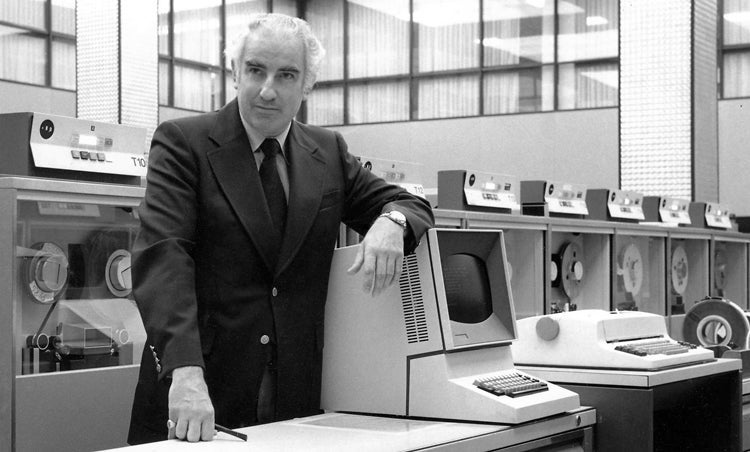Distinguished Professor Emeritus Ken McLaughlin has spent his career uncovering and shaping the stories of our local communities into urban portraits that breathe with the life of great biographies.
Take a walk through time as he uncovers some of Waterloo’s most historic legacies, including the introduction of co-operative education, early entrepreneurial ventures that lead to revolutionary spinoff companies, and the integration of computers and computer science in the post-secondary world. Meet the progressive founders, thinkers and students whose steadfast resilience has made Waterloo one of the most progressive universities in the world today.
The video captures key moments in Waterloo’s history — and at ~6:40 it recounts our early days in computer science research and application, pioneered by Wes Graham, a professor and the first director of the university’s computer centre.

Wes
Graham,
“the
Father
of
computing,”
at
the
University
of
Waterloo
stands
beside
an
IBM
360/75,
the most
powerful
computer
in
Canada
at
the
time, that
he
was
instrumental
in
acquiring
for
faculty
and
student use
alike.
The IBM
360/75
mainframe, the
same
model
of
computer
that
NASA
used
to
send
astronauts
to
the
Moon,
was
installed
in
a
building
that
would
house
the
University
of
Waterloo’s
new
Faculty
of
Mathematics.*
In 1966, Waterloo was one of the first universities in North America to establish computer science as a separate academic unit with mathematics. Today, the David R. Cheriton School of Computer Science is the largest academic concentration of computer science researchers in Canada and among the top schools of computer science throughout the globe.
Distinguished Professor Emeritus McLaughlin, the University of Waterloo’s official historian, has received many prestigious awards including the Canadian Historical Association’s Certificate of Merit, and the Certificate of Commendation from the American Association for State and Local History. He has garnered several local honours including the 1998 Special Recognition Award from the Waterloo Regional Heritage Foundation. He also received a grant from the J.W. Graham Information Technology Fund to support research on the history of computing and information technology at the University of Waterloo.
*The year was 1966 and the Govenment of Ontario was willing to pay 90% of the cost of all university buildings, including furnishings. The University of Waterloo needed a larger, faster computer, but the cost seemed prohibitive. Wes Graham had the solution. After meeting Wes to hear him out, the provincial minister of education announced the University of Waterloo’s plans for a new Mathematics and Computer building had been approved for funding. However, included in the plans was an IBM 360/75, which was carefully marked under “furnishings,” ensuring 90% payment by the government.